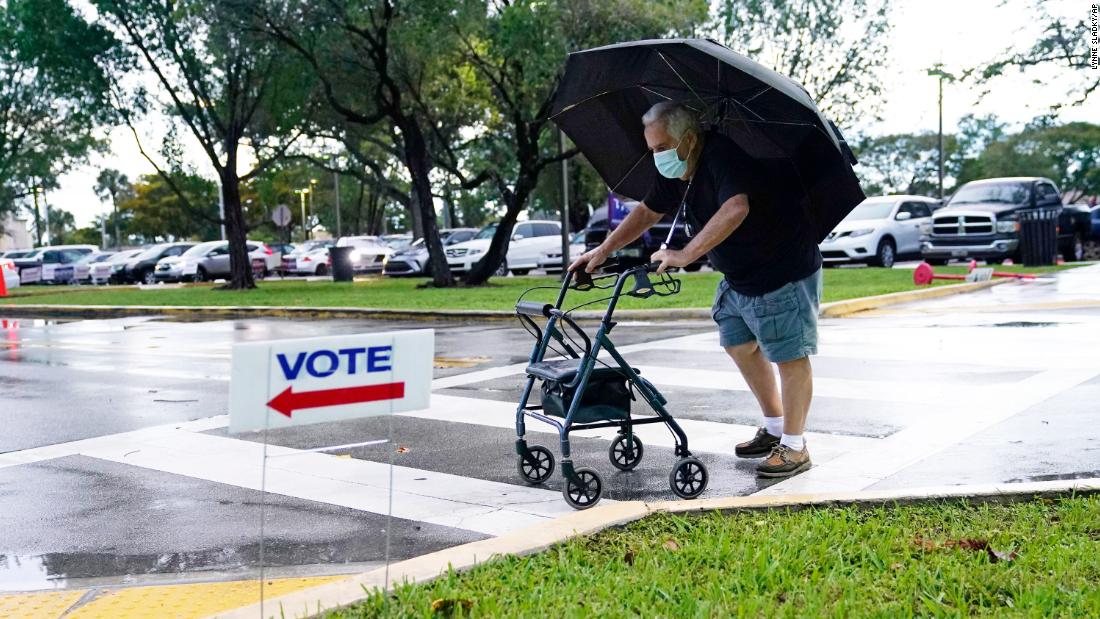
But while the eye-popping totals make clear that Americans are voting earlier, it is much harder to make predictions about what that will mean in terms of who will win.
In 2016, the total number of early or absentee votes was 46.1 million in 38 states for which there is data, according to Catalist.
In 2020, weeks before Election Day and before in-person early voting has even started in many key states, we're more than halfway to that total of pre-election votes.
The early turnout wave is mirrored in battleground states.
Even before early in-person voting began, 2.5 million ballots, or a third of the combined pre-election 2016 total, had been returned by mail.
Democrats have requested more ballots in key places
It is possible for data firms to determine the party affiliation of absentee ballots requested in certain states and Democrats are hopeful the data suggests tremendous support for Democratic nominee Joe Biden.
Take North Carolina, the state seen as a key battleground in 2020, but which went Republican in 2012 and 2016.
In 2016 around this time, North Carolina early ballots cast were: 40% by Democrats, 32% by Republicans and 27% by people who did not identify with a party.
In 2020, there is a huge contrast that so far favors Democrats -- 46% of absentee ballots cast have been by Democrats, 28% by someone who does not identify with a party and just 25% by Republicans.
Similarly, in Florida, 49% of the pre-election ballots cast are by Democrats, up from 41% in 2016, when Trump won the state.
There is a corresponding dip in pre-election ballots cast by Republicans.
The Democratic advantage in absentee ballot requests extends across the states CNN rates as battlegrounds, and for which Catalist has data -- 42% of the requests have come from Democrats and 31% from Republicans and 24% from people who don't identify with a party.
In 2016, the requests were more evenly divided in those key states -- it was 39% Democrat to 37% Republican and 21% not identifying with a party.
A lot of Republicans could be intentionally waiting for Election Day
The obvious asterisk to place here is that President Donald Trump has waged rhetorical war on mail-in voting this year.
Polls suggest Republicans are less likely than Democrats to vote by mail, so the Democratic advantage in swing state ballot requests is interesting, but not predictive of anything.
"The issue is that we really don't know the extent to which the early vote will be more Democratic-leaning than the overall tally," CNN's Harry Enten wrote over the weekend.
Georgia, which no Democratic presidential candidate has won since Bill Clinton in 1992, is newly a battleground in 2020 and the pre-election voting turnout is up 152%, according to the state secretary of state, and absentee voting by mail is up 648% compared to 2016 levels.
The state where the most early votes have already been cast is Texas, with more than 4 million.